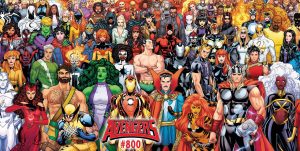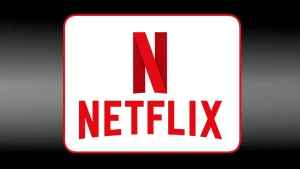As much as anime culture is associated with various TV shows, something that’s just as big a part of it all is anime movies. Whether it’s the occasional non-canon spin-offs, full-fledged sequels and finales, or even standalone passion projects, anime movies have done a lot to help the medium grow, especially in the years before anime became mainstream.
Anime movies have always been an essential part of anime culture, and while the quality of them may vary, plenty of them stand out as some of the greatest films not just in anime, but in animation, in general. A few of them especially stand out, as each one is so incredible that it can be considered essential viewing for fans.
Ufotable’s Demon Slayer: Infinity Castle part 1 is the first installment in the Demon Slayer: Infinity Castle trilogy. The Demon Slayer Corps must race through the Infinity Castle to finally kill Muzan, but his few remaining henchmen are standing in their way, and in part 1, that includes the Upper-Rank 3 Kizuki Akaza fighting Tanjiro and Giyu to the death.
There was an incredible amount of hype for Infinity Castle from the moment it was announced, and sure enough, its combination of revolutionarily gorgeous animation and direction and emotionally resonant storytelling more than justified it all. Part 1, alone, has completely changed the anime industry, and there’s no telling how much further the sequels will take things.
Toei Animation’s One Piece Film: Red is the 15th and latest film in the One Piece franchise. The Straw Hat Pirates’ latest adventure reunites Luffy with his old friend Uta, a world-famous pop star and Shanks’ daughter, but it soon becomes clear that Uta’s intentions for Luffy’s friends and the wider world aren’t as innocent as they appear.
Not only does One Piece Film: Red have the best animation of any One Piece film, but it also has some of the most emotional and all-around amazing writing in the filmography, especially when it comes to Uta’s arc. It’s on par with One Piece’s canon arcs, and it’s easy to see why it was such a hit.
Ufotable’s Fate/stay night: Heaven’s Feel III. spring song is the third and final film in the Heaven’s Feel trilogy. With Sakura now fused with the Shadow, the emergence of Angra Mainyu and the end of the world are closer than ever, and Shirou will have to be more willing than ever to sacrifice everything to save Sakura, including himself.
Not only did spring song have some of the most gorgeous action of any Fate project, but it also has some of the best writing, with emotionally cathartic Shirou and Sakura’s arcs. Heaven’s Feel was the grand finale to Fate/stay night from a meta standpoint, and overall, Ufotable did an amazing job bringing it to life.
TMS Entertainment’s Akira takes place in the dystopian Neo-Tokyo and revolves around two bikers named Kaneda and Tetsuo. An encounter with the JSDF leads to Tetsuo’s awakening of psychic powers that he quickly loses control of, and it soon falls to Kaneda to stop his friend’s rampage, all while unraveling the mystery of the legendary esper, Akira.
With its spectacular artwork, incredible animation and direction, and a story that perfectly adapts and condenses the original manga, Akira is an anime film unlike any other that more than holds up after over 30 years. It’s a film that’s often seen as one of the greatest animated films of all time, and sure enough, it’s easy to see why.
In Production I.G’s Ghost in the Shell, the cybernetic major Motoko Kusanagi and her team in public security are tasked with hunting down a mysterious and dangerous hacker known as the Puppet Master, and in doing so, Motoko goes on a quest to discover what it means to be human and if she can still call herself as such.
Ghost in the Shell is one of the biggest and most influential anime films in history, and with its incredible action and visuals and engagingly mature narrative, it’s easy to see why. It more than earns its stellar reputation, and with the new Ghost in the Shell anime coming in 2026, there’s never been a better time to watch it.
Studio Chizu’s Belle stars Suzu Naito, a socially awkward girl who moonlights as Belle, the idol who’s taken the virtual world of U by storm. During one of her concerts, Belle is inexplicably drawn to a violent player called Dragon, and her quest to get to know Dragon just might be what they need to overcome their respective pain.
Academy Award-nominated director Mamoru Hosoda is a master of weaving emotional stories, and Belle is no different, as it does a perfect job of using incredible music to tell a heartwrenching story about overcoming trauma and finding self-worth. Add in the gorgeous 2D and 3D visuals, and it’s easy to see it as Hosoda’s magnum opus.
In Studio Ghibli’s Spirited Away, timid Chihiro Ogino and her parents are, naturally, spirited away to a fantastical realm, and when her parents are turned into pigs and taken captive by a witch, Chihiro must learn to be brave as she looks for a way to save her parents and find her way home.
No animation studio is held in higher regard than Studio Ghibli, and Spirited Away embodies everything great about their work with its incredibly likable cast and emotionally engaging narrative supported by utterly stunning artwork and animation. Few films are more beloved than Spirited Away, and even after over 20 years, that hasn’t changed in the slightest.
Studio Khara’s Evangelion: 3.0+1.0 Thrice Upon a Time is the final film in the Rebuild of Evangelion tetralogy. Following Kaworu’s death, Shinji is feeling more distraught than ever, but he’ll have to regain his resolve one more time to put an end to the Human Instrumentality Project and settle things with Gendo, once and for all.
Despite suffering numerous delays, Thrice Upon a Time was well worth the wait, as its masterful combination of stunning visuals and thoughtful character writing birthed the perfect emotional climax to both the tetralogy and the entire Evangelion franchise. Evangelion is easily one of anime’s most iconic franchises, and fortunately, Thrice Upon a Time was the perfect way to end it.
In Kyoto Animation’s The Disappearance of Haruhi Suzumiya, Kyon’s daily routine is suddenly uprooted when he finds himself in a world where the SOS Brigade is gone and Haruhi seemingly doesn’t exist. All Kyon has are questions about his new status quo, and he’ll have to answer them soon before he loses any chance of returning to his old life.
In addition to being one of Kyoto Animation’s best-looking films to date, The Disappearance of Haruhi Suzumiya’s writing does a phenomenal job of telling an emotional story that brings Kyon’s character arc to its absolute peak, as well. Haruhi Suzumiya may never get a third season, but its feature film is as great a finale as a person could ask for.
Madhouse’s Perfect Blue stars Mima Kirigoe, a popular idol who retired to become a full-fledged actress, but doing so put Mima on a path of self-doubt and horrid compromises that test her sanity at every turn, and it soon becomes hard for Mima to tell what in her life is real and what is just figments of her fragile psychosis.
With an amazing combination of gorgeous visuals and surreal, deconstructive writing, Perfect Blue is a psychological thriller unlike any other and, above all else, the greatest story to come from legendary director Satoshi Kon. There’s never been a film quite like Perfect Blue, and there’s no better contender for an anime film that’s essential viewing for fans.
The post 10 Essential Anime Movies Every Fan Has To See appeared first on ComicBook.com.




